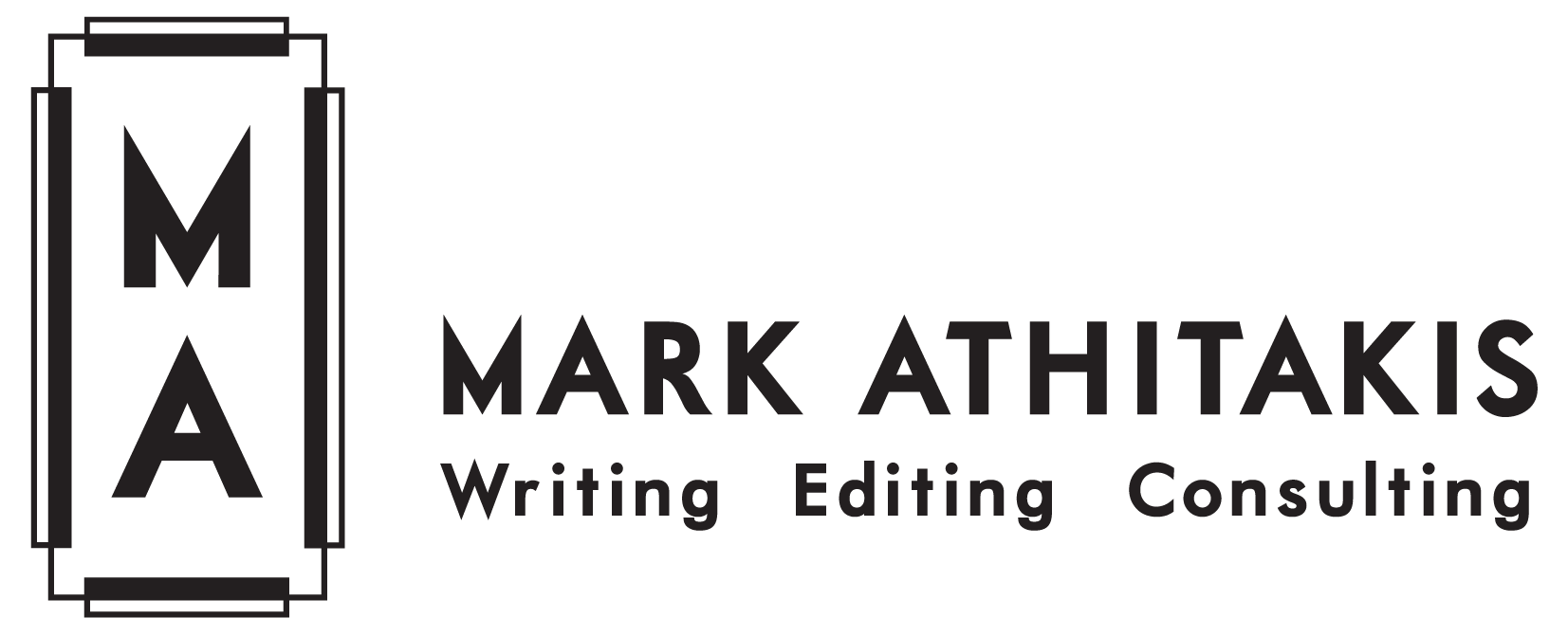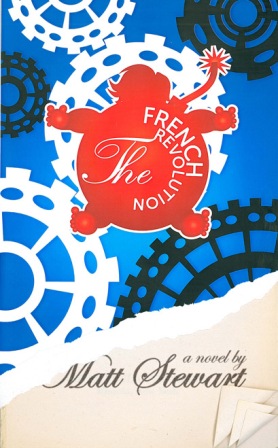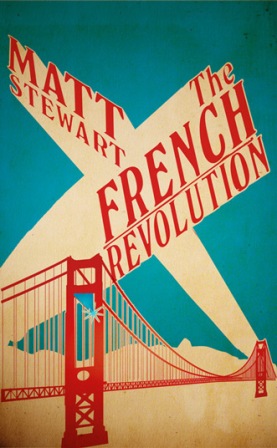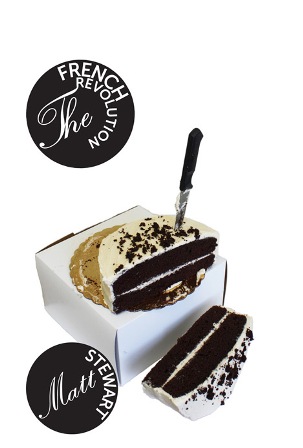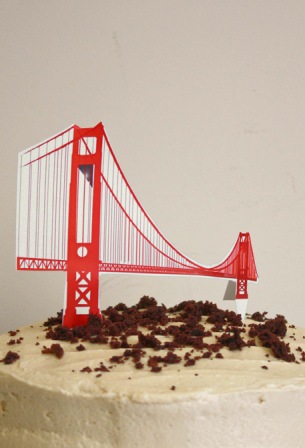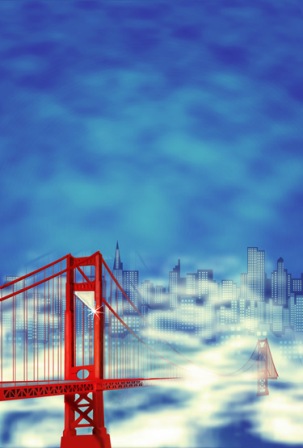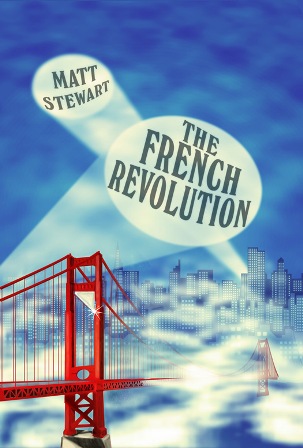Last September this blog featured a guest post by DC-area writer and illustrator Goodloe Byron about his work on the cover for Matt Stewart‘s debut novel, The French Revolution. The book is now done—it officially comes out tomorrow, Bastille Day—and the cover went through plenty of fine-tuning between last fall and today. Byron describes the final stages of the process below. (Click on the images for larger versions.)
Every so often you’ll think you’re all set to go but then the cover hits the wall, by some mischievous book buyer, or by the second thoughts that inevitably come with time. The latter was the case in this instance. Matt and Denise [Oswald, editorial director of Soft Skull Press] became concerned that the guillotine was not prominent enough to register in peoples minds. [Editor’s note: Stewart writes: “I found people were missing the guillotine in the older version–there’s no missing it now. Guillotines should never be subtle.”] As I discussed before it was a miraculous stroke of luck that it had come out okay looking in the first place, so their suggestion seemed quite ominous to me. I quickly prepared this crude drawing to show them what their idea would look like and remind them of my natural limitations to realize it.
This did not horrify them as much as I’d intended and they still seemed to think it was a good idea. So I sat down and went into an autistic mode trying to draw a meticulous version of it, thinking that I may well get lucky again if I sat down long enough. Once again, I was surprised when they said that the end result was acceptable. Entropy of the mind enters at this stage of the process. If you draw a nice little stickman in a few seconds, you can easily appreciate all of its good qualities, the positioning of the arms or a particular facial expression. But when you spend a few hours shading in this or that, or moving the text here and there, it is inevitable that you will come to see it in a more negative light. Over time I slowly become fixated on the thought that it looked like a still frame from the original Ninja Turtles television series. This fixation is so deep that even now that is all I can think when looking at it.
So the brains were not working on a very high plane. When it came to the back I figured it would just have the same thing in there, minus the bridge.
I knew in my heart that this was not a sufficiently creative answer, but I couldn’t think of anything else. Then I reread the notes from earlier and thought I would again throw out the idea of putting in some search lights.
So I tossed it all in the pot and prayed that it would work out. They both seemed to like it well enough. We spent a bunch of time adding or subtracting fog. We were also uncertain what to do with the copy, specifically the blurbs and bios. Ordinarily Soft Skull books have lots of back cover copy, which can conceal a lack of imagination on the designer’s part. But Denise was very kind about editing down the text because she knew I would be heartbroken if I could not include my searchlights. So we cut out the bio and shortened some of the blurbs. We even added a blurb by Marie Antoinette, who is ordinarily very reserved with her praise, since she died especially.
Someone asked if we could toss in the Eiffel Tower, I think it was Matt’s idea. And so I spent some time drawing up a little version of it with Adobe Illustrator. But I think this idea of his was a very good one, as the tower looks very adorable to me. Now I imagine someone might object that the Eiffel Tower is not in San Francisco, nor did it exist at the time of the French revolution. But if something doesn’t work on second thought, that doesn’t mean that it doesn’t work. Supposedly a good designer is one who thinks about the first and second thought, but if you have to pick one, I’d say the second thought is not much of a priority.
Here is the final product. In the end, I did let Denise down a bit with the coloration, which she had thought would be white, red, and blue, as in the French tricolor. Though that had been my original intention I had long since forgotten it, and over time the blue had become more purple as I tried to get it more ominous looking. For that I felt some regret, but overall I think in the end we wound up with a pretty nice little cover here. The book is a satirical roman a clef of the French Revolution recast within a dysfunctional family in modern day San Francisco. Trying to capture that idea visually is a bit of a tall order, but I hope that some of it gets across. My two goals are that I want Denise and Matt to be happy with me, and I think they were moderately so, so I will call this a success!
One more note from Stewart: “If you look at the bottom left, you’ll see two ghost-ish images that look a little like jigsaw puzzle pieces. These are actually winches which support the painters who are always repainting the Golden Gate Bridge—which is constantly worn down from sea spray and wind. Nobody ever notices these “ghosts” unless I point them out, and you’d never know what they are unless you’ve been there a whole lot (I used to commute over the Golden Gate Bridge on my bike).”
